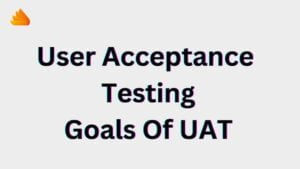Smoke Testing Examples | Why to Do | How to Do
What is smoke Testing?
Smoke testing is a type of software testing that is used to quickly determine whether the most critical and basic functions of a software application are working correctly. This type of testing is done at the beginning of the software development cycle to ensure that there are no major issues that would prevent the software from functioning properly. In this blog, we will give a few Smoke testing examples for different kinds of domains.
For example, if a website is being developed, smoke testing would be used to test if the website can load successfully and if the basic features like navigation and links are working properly. If these critical functions are not working, then further testing cannot be done until they are resolved. Smoke testing is not meant to be comprehensive, but rather a quick and simple check to ensure that the software is stable enough to proceed with further testing.
Why Smoke Testing?
- It allows testers to quickly determine whether the most critical and basic functions of a software application are working correctly.
- By testing the basic functions of the software at the beginning of the development cycle, developers can identify and address any major issues that would prevent the software from functioning properly.
- Prevent issues from occurring later in the development process, when they may be more difficult and costly to fix.
How to Start the Smoke Testing?
- Identify the most critical and basic functions of the application that need to be tested. These functions should be identified based on the application’s requirements and user expectations.
- Create a set of test cases that cover these critical functions. The test cases should be simple and quick to execute.
- Install and set up the application environment, including any required software or hardware.
- Run the test cases to ensure that the critical functions are working correctly. This may include testing basic features like user log in, navigation, and search.
- If the critical functions are working correctly, the application can be considered stable enough to proceed with further testing. If any issues are found, they should be reported and addressed before further testing is done.
- Document the results of the smoke test, including any issues found and their resolutions.
It’s important to note that smoke testing is not meant to be comprehensive, but rather a quick and simple check to ensure that the software is stable enough to proceed with further testing. Further testing should be done after smoke testing to ensure that all aspects of the application have been thoroughly tested.
Smoke Testing Example:
E-Commerce Website Smoke Testing Examples:
- Verify that the website loads successfully and that there are no broken links or errors.
- Verify that users can register for an account on the website.
- Verify that users can search for products on the website.
- Verify that users can log in to their accounts and view their account information.
- Verify that users can add products to their cart and proceed to checkout.
- Verify that users can enter their billing and shipping information during checkout.
- Verify that users can select a payment method and complete the purchase.
- Verify that users receive a confirmation message or email after completing a purchase.
- Verify that users can view their order history in their accounts.
- Verify that users can leave reviews for products on the website.
These are just some basic scenarios that should be covered in a smoke test for an e-commerce website. It’s important to customize the scenarios based on the specific requirements and features of the website being tested.
MultiMedia Streaming website:
- Verify that the website loads successfully and that there are no broken links or errors.
- Verify that users can search for movies, TV shows, and other content on the website.
- Verify that users can view the details of a movie or TV show, including the cast, synopsis, and rating.
- Verify that users can watch a video on the website without interruption.
- Verify that users can pause, resume, and rewind a video.
- Verify that the video player functions correctly on different devices and browsers.
- Verify that the website displays relevant recommendations for users based on their viewing history.
- Verify that users can create a watchlist of content to watch later.
- Verify that the website has appropriate parental controls and age restrictions for content.
- Verify that users can cancel their subscription to the service if they choose to.
These are just some basic smoke testing examples that should be covered in a smoke test for a streaming website. It’s important to customize the scenarios based on the specific requirements and features of the website being tested.
Banking Web Application:
- Verify that the website loads successfully and that there are no broken links or errors.
- Verify that users can log in to their accounts and view their account information.
- Verify that users can view their account balance and transaction history.
- Verify that users can transfer funds between accounts.
- Verify that users can pay bills or make other transactions through the website.
- Verify that the website has appropriate security measures, such as SSL encryption, to protect users’ sensitive information.
- Verify that users can change their account information, such as their address or contact information.
- Verify that users can report a lost or stolen card and request a replacement.
- Verify that users can contact customer support through the website.
- Verify that users can log out of their accounts and end their session.
These are just some basic scenarios that should be covered in a smoke test for a banking website. It’s important to customize the scenarios based on the specific requirements and features of the website being tested. Additionally, it’s important to ensure that the testing is done in a secure and controlled environment and that no real user data is used during the testing process.
I hope you liked the smoke testing examples.
Thanks for reading the article !!!!






Post Comment